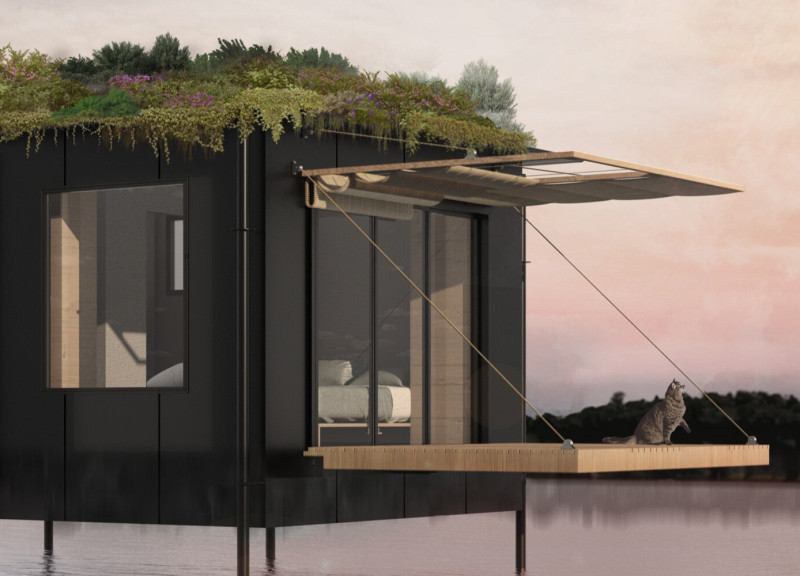5 key facts about this project
At its core, the architecture represents a balance between modern design aesthetics and practical considerations. The architect's concept revolves around creating spaces that not only meet the requirements of contemporary living but also promote a sense of community and belonging. Through careful attention to layout, the design encourages fluid movement between spaces while maintaining distinct areas for relaxation, work, and social engagement.
The project is characterized by its emphasis on natural light and ventilation. Large windows and strategically placed openings allow sunlight to penetrate deep into the interiors, while also providing occupants with unobstructed views of the outdoor landscape. This connection to nature is further emphasized by the incorporation of outdoor terraces and gardens that serve as extensions of the living space. Such design choices not only enhance the living experience but also support mental and physical well-being.
Materiality plays a crucial role in the project’s overall aesthetic and functional performance. The selected materials reflect a commitment to sustainability and durability. Concrete is utilized for its structural integrity, while wood elements introduce warmth and a natural touch. Glass facades contribute to a sense of transparency, allowing for interaction between the interior and the exterior. Additionally, the use of local materials underscores the project's connection to its geographic context, ensuring that it harmonizes with the surrounding architectural vernacular.
The layout is meticulously planned, with consideration given to both individual privacy and communal experiences. Common areas are designed to foster social interaction, featuring open-plan spaces that encourage gatherings. The careful arrangement of living quarters provides personal spaces for residents, ensuring comfort without compromising the community-oriented ethos of the design. This duality of private and communal spaces is particularly evident in [insert specific examples of spatial configurations, e.g., a shared kitchen area or flexible workspaces], which cater to varied user preferences.
Another unique aspect of this design lies in its responsive approach to environmental conditions. The building integrates passive design strategies that utilize local climate data to minimize energy consumption. Elements such as overhangs and shading devices are strategically placed to reduce solar gain during warmer months, while maximizing light during the winter. This not only contributes to the sustainability goals of the project but also enhances the overall comfort of the interior spaces throughout the year.
Additionally, the project explores innovative solutions for water management and energy efficiency. Rainwater harvesting systems are incorporated to support landscaping and reduce reliance on municipal water sources. Furthermore, energy-efficient appliances and renewable energy systems, such as solar panels, are seamlessly integrated to lower the ecological footprint of the building.
The architectural design embodies a contemporary lifestyle that respects tradition through its careful contextual integration. It serves as a case study in how thoughtful architecture can address modern living requirements without sacrificing environmental coherence. This project ultimately contributes to the conversation about sustainable urban development and the role architecture plays in enhancing community life.
For those interested in exploring the nuances of this architectural project more deeply, I encourage you to review the architectural plans, sections, and detailed design elements. These documents provide further insights into the project’s innovative approaches and well-considered architectural ideas, showcasing how each detail is meticulously crafted to support both the functionality and the vision behind the design.


























